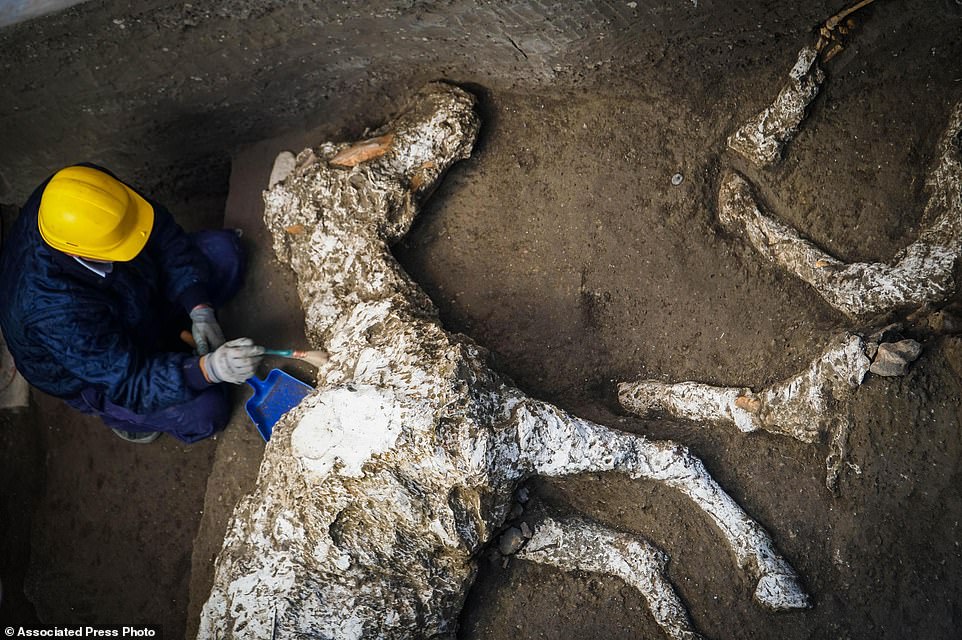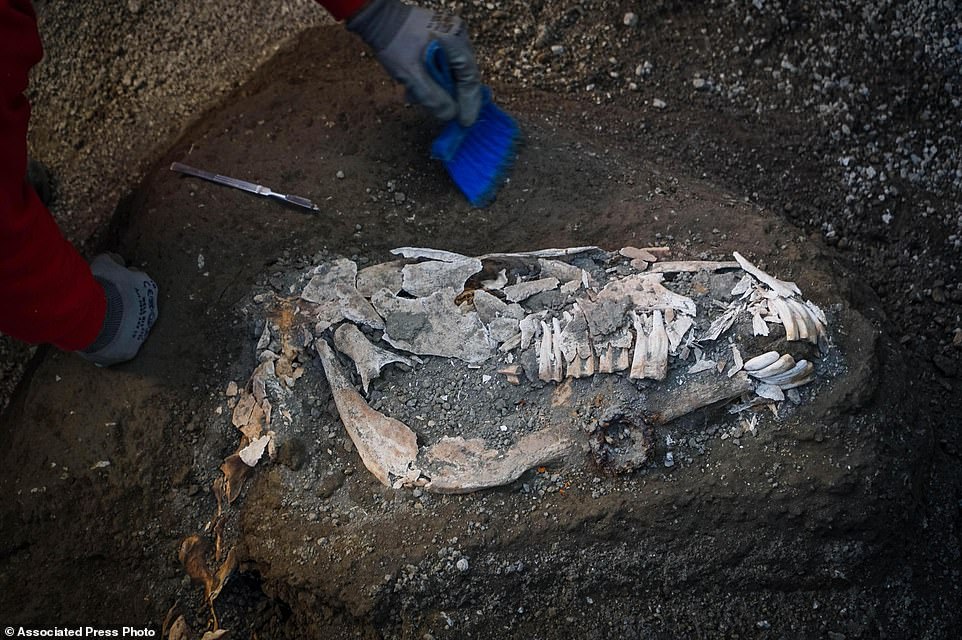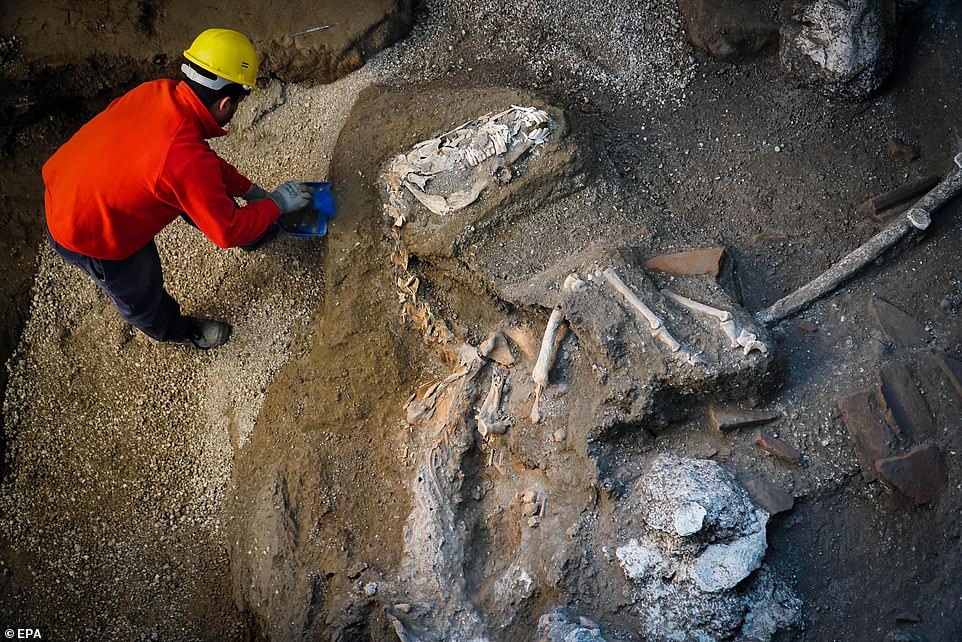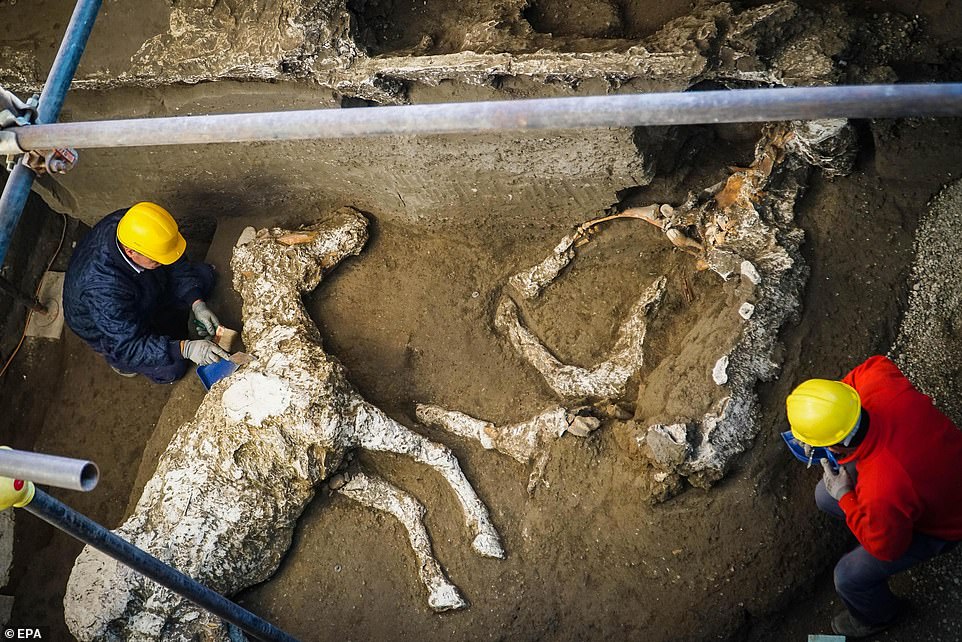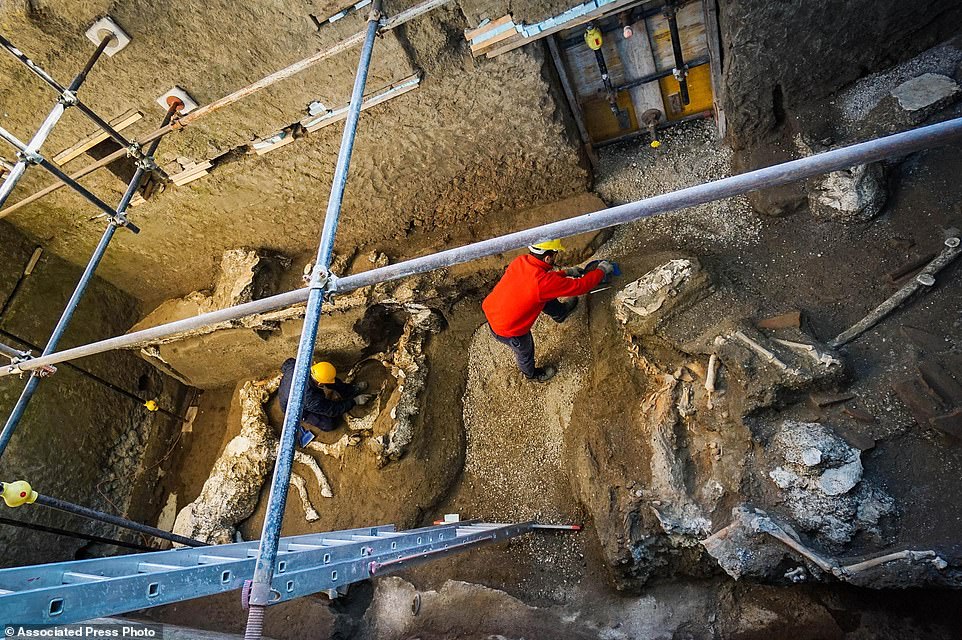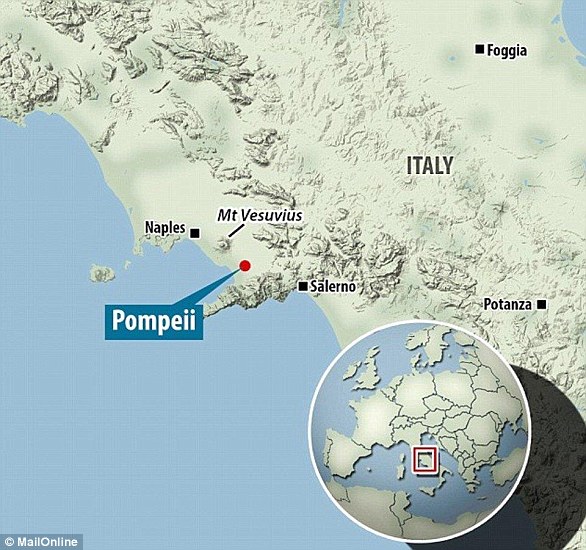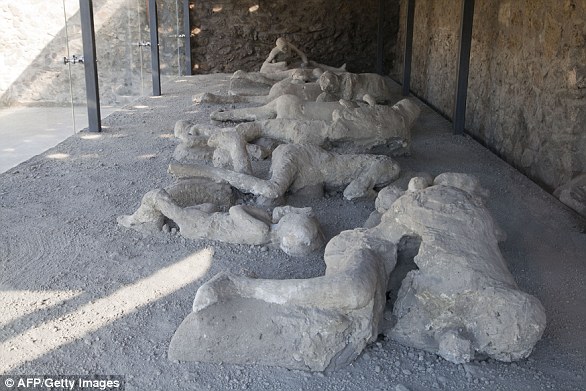عثر علماء آثار الأحد 23 ديسمبر، على بقايا رفات حصان خارج أسوار مدينة بومبي الإيطالية، وهو ما اعتبروه اكتشافا نادرا.
وبحسب العلماء فإن رسن الحصان ولجامه موجودان عليه، ما قد يبين بأن صاحبه كان على وشك استخدامه، وربما كان على وشك الهروب من الكارثة التي حلت بالمدينة عام 79 بعد الميلاد،
حيث انفجر بركان فيسفيوس والذي أدى إلى طمر المدينة بالرماد.
وتم العثور على بقايا الجثة مع أحصنة أخرى، ضمن ركام أحد المنازل، والذي كان يعود إلى جنرال روماني، أو لأحد القادة العسكريين.
وقد أدى انفجار البركان إلى اندثار القرية مع قرى أخرى مجاورة تحت ملايين الأطنان من الرماد والحمم البركانية، والتي أحالت القرى إلى أنقاض.
كما وجد العلماء في هذا البيت آلة لصنع النبيذ، وبعض الأفران بالإضافة إلى لوحات فسيفسائية جميلة.
وبحسب ماسيمو أوسانا مدير متحف بومبي الأثري، فإن هذا الاكتشاف تم اثناء التنقيب في اسطبل المنزل، شمال البلدة.
وأضاف:”من الواضح أن نهاية هذا الحصان كانت مؤلمة، حيث اختنق بسبب الرماد أو الغازات السامة.
أعمال التنقيب والاستكشاف في هذا المنزل بدأت مع بدايات القرن العشرين، إلا أنها توقفت بعد فترة، ليصبح هدفا لمهربي الآثار.
وأكد أوسانا بأنه بعد الانتهاء من التنقيب في هذا المنزل، سيتم عرضه للعموم.
